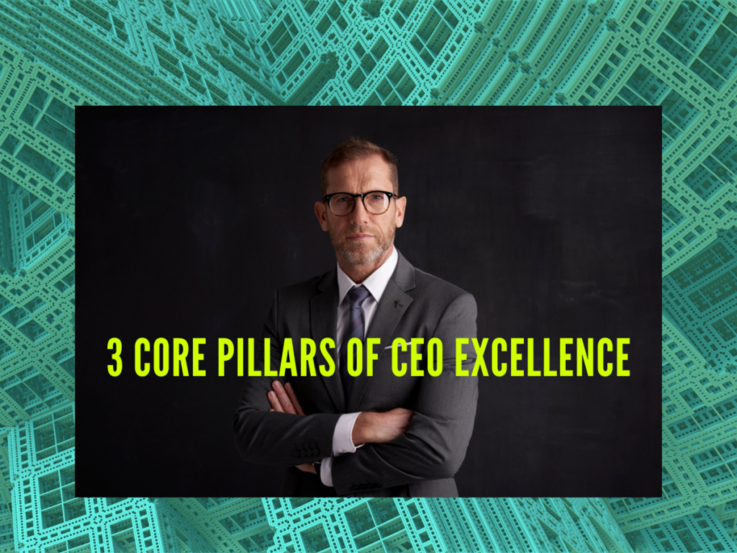3 Core Pillars of CEO Excellence
The person who holds the key to that room is the Chief Executive Officer. And in that den is also where the buck stops.
As the saying goes, “heavy is the head that wears the crown.” It’s because the CEO answers to the Board of Directors, his peers (CFO, COO, and the whole executive team), his direct reports, and basically, the entire organisation. He is in charge of the interest of the company and its organisational health.
And, that is a lot on one’s plate.
So, what are the core pillars these Chief Executives live by? Essentially, three:
- VISION & STRATEGY
A good CEO has a remarkable ability to think in the big picture. He sees way far ahead and is ten steps ahead of anybody in his team. He holds the vision for the company, and with this vision directs the course for the company.
There will be cases when the leader’s vision stays in his head for quite some time because he is unable to articulate it. Because unexpressed expectations result in unmet aspirations, the CEO must find a person he can trust to serve as his sounding board.
And yet, there will be visionary leaders who spew creative ideas like a tennis ball machine, and therefore, confuse and tire out their teams by throwing them in ten different directions.
Unless these leaders, in both instances, find complementary partners who have organisational skills to execute their vision strategically, their vision will never come to fruition, and the excitement will fizzle out. Or, it will take years before they reach their destination because they will take the winding roads they are familiar with instead of the new straight path that can be forged.
Vision is the destination. It answers the question, “where are we going?” Strategy is the roadmap and answers the question, “how are we going to get there?” These terms go together like horse and carriage.
When the company vision has been set, it is the CEO’s next responsibility to work on the strategy. What will be the approach towards the vision?
Strategy is the tactical planning tool for how the organisation will reach its destination. It is a cross-functional tool shared across the organisation for alignment, so each department follows the same path. It will guide the teams in making decisions and appropriating resources – time, money, people. The CEO leads in its creation.
CAVEAT: The best laid out strategy goes awry in the hands of unmatched talents.
- TEAM & TALENTA
discerning CEO will put importance on talent acquisition and management as much on business strategy and financial management. If the right people are matched with the right positions, tasks are easier and quicker to accomplish. When the experiences and skills of a member are aligned with his position, significant performance is produced.
Three factors that a CEO must evaluate in a candidate: Attitude, Skills and experience, and Job match.
Don’t expect a monkey to swim as well as a fish. A leader must know the strength and weaknesses of his team before assigning them to new positions or tasks. You might later judge them as incompetent after putting them in positions that do not match their strengths but instead highlight their weakness.
- FINANCE
As the CEO answers to the Board of Directors and stakeholders, he is responsible for the overall financial standing of the company.
He plays a key role in all financial matters – revenue, investments, budget, financial obligations, market share, etc. However, the details of the financial management are handled by another executive, the Chief Financial Officer.
No decent CEO deals with the nitty-gritty. It is below his pay grade. Micromanagement is not in a CEO’s job description.
TAKE AWAY
The CEO serves as the face of the organisation. He has the crucial role of projecting a robust organisation to keep the business attractive and worthwhile to the shareholders, partners and clients. All these duties and responsibilities can be overwhelming and consuming.
It is best for these executives to have an outsider connection as a sounding board for an unbiased perspective.
If you are leading a startup company, and would want to navigate these key pillars in-depth, or you are a CEO of an established organisation, and you want to further advance your success rate, let’s have a conversation.
You might wonder, do experts need a coach? Read here.
I am an ICF Master Certified Coach with more than 20 years of international leadership experience. I support entrepreneurs, managers, executives, and leaders in generating more impact, advancing their professional development, and realizing their business and personal goals.
As your sparring partner and reliable partner, I will be at your side until the finish line.
« Back